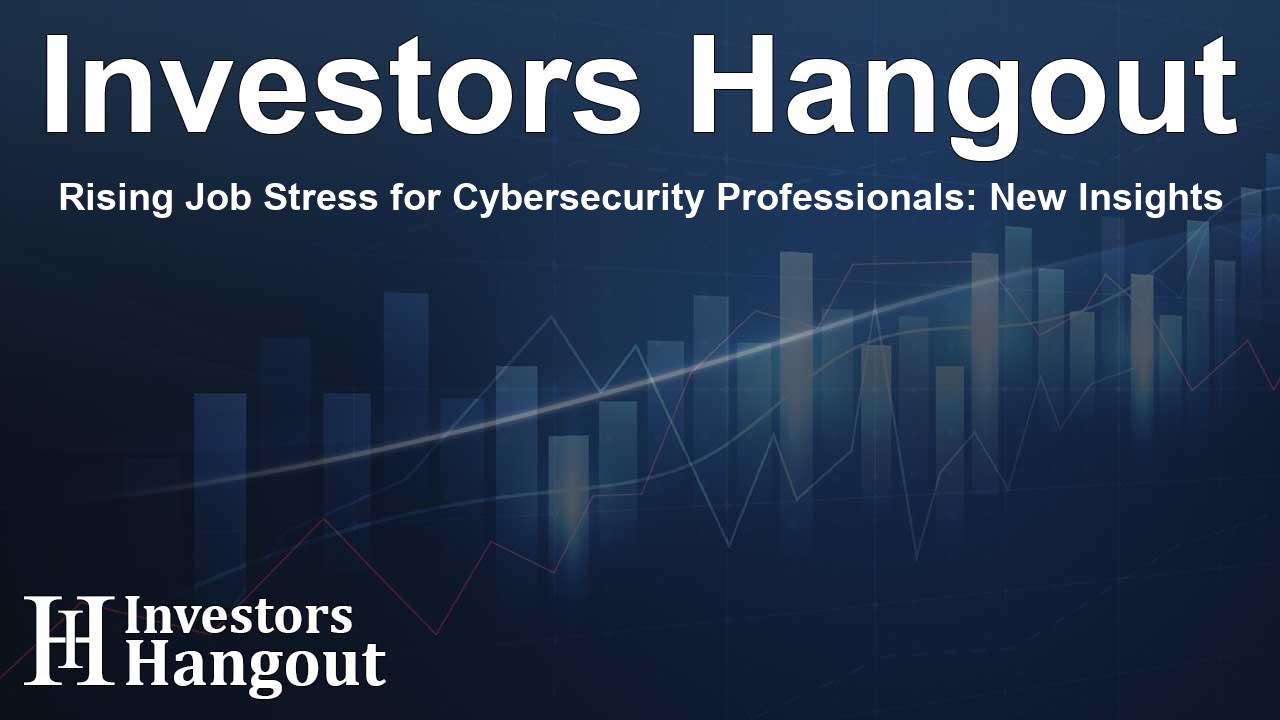Rising Job Stress for Cybersecurity Professionals: New Insights

Rising Job Stress for Cybersecurity Professionals
Recent research reveals that a significant 66 percent of cybersecurity professionals report that their jobs are becoming more stressful than they were five years ago. This alarming trend highlights the increasing pressure in the cybersecurity field, as discussed in the 2024 State of Cybersecurity survey report.
Understanding the Increase in Job Stress
This comprehensive study, sponsored by Adobe, features insights from over 1,800 cybersecurity experts regarding their experiences and observations about the work environment. Key factors contributing to the surge in job stress include:
Key Stress Factors Identified
- An increasingly complex threat landscape, as indicated by 81 percent of respondents.
- Insufficient budgets, which were noted by 45 percent.
- Difficulties in hiring and retaining talent, also reported by 45 percent.
- A lack of adequately trained staff, affecting 45 percent of those surveyed.
- Inadequate prioritization of cybersecurity risks, impacting 34 percent.
Escalating Cybersecurity Threats
As stress levels rise, cybersecurity attacks are on the increase, with 38 percent of organizations experiencing more incidents compared to 31 percent in the previous year. Significant types of attacks reported include:
Common Types of Cyber Threats
- Social engineering attacks, which account for 19 percent.
- Malware incidents, making up 13 percent.
- Unpatched systems, representing 11 percent.
- Denial of Service attacks, also at 11 percent.
With nearly half of organizations (47 percent) expecting to face a cyberattack in the upcoming year, concerns over threat detection and response capabilities continue to loom large. Only 40 percent of survey participants express high confidence in their teams' abilities to manage these challenges.
Challenges in Resources and Staffing
In light of these rising threats, the report reveals stark concerns regarding budget and hiring practices. Over half (51 percent) of cybersecurity teams feel underfunded, an increase from 47 percent last year, and only 37 percent anticipate budget increases for the upcoming period.
Current Hiring Trends
Despite the pressing need for more cybersecurity expertise, hiring rates appear to have plateaued. The survey showed that:
- 38 percent of organizations currently have no open positions, up from 35 percent previously.
- 46 percent are seeking non-entry level cybersecurity professionals, a drop from 50 percent last year.
- Entry-level positions have also decreased to 18 percent from last year's 21 percent.
Skills Demand and Retention Issues
Organizations are prioritizing experienced candidates for open roles, indicating that 73 percent are looking for candidates with hands-on technical experience, while 38 percent consider certifications important. However, significant skill gaps remain, particularly in soft skills (51 percent) and cloud computing (42 percent).
Retention Challenges Faced by Employers
Over half of respondents (55 percent) struggle to retain qualified staff, pointing to several reasons for turnover, such as:
- Competing recruitment offers from other companies (50 percent).
- Insufficient financial incentives (50 percent).
- Limited opportunities for promotion and development (46 percent).
- High stress levels (46 percent).
As Jon Brandt, an ISACA Director, points out, addressing occupational stress among cybersecurity personnel is essential. Supportive practices can lead to greater employee satisfaction and retention, as leaders invest in their teams.
Conclusion
The findings from the 2024 State of Cybersecurity survey report underscore the urgent need for organizations to adapt to the challenges of a complex threat landscape while ensuring their cybersecurity teams are well-resourced and supported in their endeavors.
Frequently Asked Questions
What are the primary causes of stress for cybersecurity professionals?
Key causes include a complex threat landscape, budget constraints, recruitment challenges, and insufficient training.
How has the incidence of cyberattacks changed?
38 percent of organizations reported an increase in attacks this year, compared to 31 percent last year.
What types of cyberattacks are most prevalent?
Social engineering, malware, unpatched systems, and denial of service attacks are some of the common threats faced.
Are organizations hiring more cybersecurity professionals?
Current hiring trends show a plateau, with many organizations reporting no open positions and difficulties in attracting talent due to budget constraints.
What can employers do to retain cybersecurity staff?
Employers should focus on reducing occupational stress, offering competitive incentives, and providing promotion opportunities to retain talent.
About Investors Hangout
Investors Hangout is a leading online stock forum for financial discussion and learning, offering a wide range of free tools and resources. It draws in traders of all levels, who exchange market knowledge, investigate trading tactics, and keep an eye on industry developments in real time. Featuring financial articles, stock message boards, quotes, charts, company profiles, and live news updates. Through cooperative learning and a wealth of informational resources, it helps users from novices creating their first portfolios to experts honing their techniques. Join Investors Hangout today: https://investorshangout.com/
Disclaimer: The content of this article is solely for general informational purposes only; it does not represent legal, financial, or investment advice. Investors Hangout does not offer financial advice; the author is not a licensed financial advisor. Consult a qualified advisor before making any financial or investment decisions based on this article. The author's interpretation of publicly available data shapes the opinions presented here; as a result, they should not be taken as advice to purchase, sell, or hold any securities mentioned or any other investments. The author does not guarantee the accuracy, completeness, or timeliness of any material, providing it "as is." Information and market conditions may change; past performance is not indicative of future outcomes. If any of the material offered here is inaccurate, please contact us for corrections.